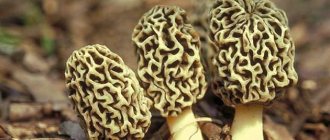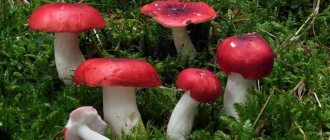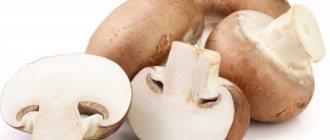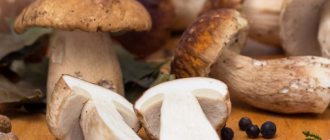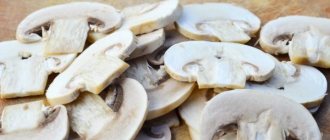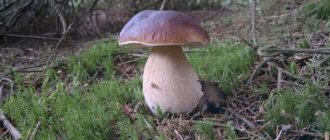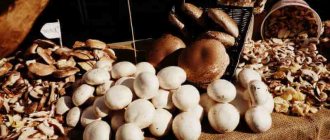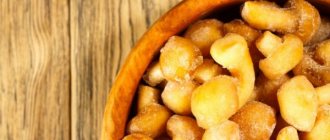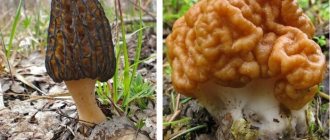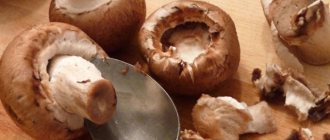Author: Horned Corpse Eaters
01 August 2021 17:32
Tags: mushrooms tips
53018
12
They say that a real mushroom picker will always distinguish an edible mushroom from an inedible one. Maybe. But what to do if you don’t know much about mushrooms, but you really want to collect them? Help posters will clearly show you what the main edible mushrooms look like.
0
See all photos in the gallery
Most often found in central Russia are honey mushrooms, boletuses, boletuses, chanterelles, and russula. But there are also little-known mushrooms, or rather, we often see them in the forest, but we don’t know the name, and yet they are very edible and even tasty. For example: valui, smoothy, goat, bitter and others. On the eve of the mushroom period itself, the editors invite you to see what edible mushrooms look like: you will see not only the characteristic features of mushrooms, but also their doubles, instructions on how to prepare them, where they grow, etc. It is especially convenient to save these posters in your phone and check how they say, right on the spot.
Crested hedgehog
In appearance, the combed hedgehog (pictured above) is a pile of long hanging light “stalactites”. Some mushrooms look like a hedgehog, some are more like a waterfall of boiled noodles. The mushroom has a fruiting body measuring up to 20 centimeters and weighing up to 1.5 kilograms, the color varies from white to beige. As a rule, it grows on the trunks of deciduous trees, including dead ones. The pulp of the combed manger is aromatic, fleshy, reminiscent of shrimp or crab meat. Those who have tried the hedgehog say that it is a delicious delicacy with a subtle sweetish taste. The wild mushroom is highly valued in folk medicine, but is rare. In Russia, it is listed in the Red Books of the Primorsky Territory and the Jewish Autonomous Region. It is grown artificially in China.
Milk mushrooms
Edible mushrooms are rarely found in meadows. White and black milk mushrooms grow close to the forest or in heavily shaded birch or coniferous groves and parks.
The names go back to the Church Slavonic language and mean “heap” because the mushrooms grow in groups. Description:
- Hat: wide, flat with a recess in the middle. Thick, dense to the touch. In some species the edge is uneven or with short fringe.
- Hymenophore: represented by frequently located white plates with a yellowish tint.
- Leg: fused with the plates, short and wide. The color is the same as the cap, it is hollow when cut, and the shape is cylindrical.
- Pulp: milk mushrooms have a fruity smell and change color when broken. It produces a white milky sap that turns yellow when exposed to air.
Fruiting season is July-September. The species is considered conditionally edible, therefore preliminary heat treatment is recommended. Good for salting and pickling; when fried and boiled, it becomes tough.
Description
In their unpresentable appearance, these mushrooms are similar to potatoes. They are characterized by a smooth leathery surface with many cracks. They are usually slightly larger in size than a nut. The pulp is white, beige, gray, black or brownish. The strongest aroma combines the smell of nuts and mushrooms. They reproduce by spores produced on a fleshy stalk.
Yellow Ramaria, or Horntail
This mushroom has a coral-shaped shape, for which it received the nickname “deer horns” or “horned mushroom”. The fruiting body of yellow ramaria consists of several branching processes coming from one base. The length of the fruiting body can reach 10-15 centimeters, height – 6-20 centimeters, weight – up to three kilograms. The color of a young mushroom is usually uniformly yellow, although it may acquire other shades with age. The mushroom has a sweet smell and delicate taste; the Chinese call it “mushroom noodles” and artificially cultivate it. Rogatika is fried, boiled, stewed, but the yellow ramaria soup is especially tasty.
Line
What does it look like
Article on the topic
Symptoms of mushroom poisoning: the dangers of fly agarics, toadstools and stitches
Most of all, the line looks like brains, although some compare its cap to a walnut. In diameter, this mushroom can be quite large, about the size of a fist, and sometimes more. Its cap changes color from light to dark brown. The stem of this mushroom is very short.
Where is it found?
In pine forests, in clearings, in fires, they also occur in open places in deciduous forests. Can be found from very early spring until May. Sometimes it even comes out during the winter thaw.
How to cook
The lines contain toxins dangerous to humans. Therefore, they must be boiled before frying or stewing. The broth should be drained, the mushrooms should be washed with cold water and it is advisable to boil again for at least 10 minutes. And then you can simmer it in gravy.
Sarcosoma globulus, or witch's cauldron
The next mushroom does not look particularly appetizing, and the name reminds of some unpleasant disease - globular sarcosoma. People came up with other names for it: witch’s cauldron, earthen oil, fist. The mushroom is a soft, dark brown fruiting body without a stalk. The diameter of a witch's cauldron can reach six to eight centimeters. The surface of the mushroom is velvety to the touch; with age, it decreases in size and becomes wrinkled. In the depression at the top, like in the crater of a volcano, there is that very “earth oil” - a thin layer of jelly-like substance containing elements of spores. Traditional medicine gives the cam a lot of healing effects, but you can simply eat it - usually the mushroom is fried or stewed with potatoes. It is worth noting that sarcosoma globulus bears fruit once every few years, for this reason the rare mushroom is listed in the Red Books of Tatarstan, Arkhangelsk, Moscow, Tyumen and Novosibirsk regions.
Edibility
With good reason, false truffles cannot be called poisonous, although they are unsuitable for human consumption. But deer, rodents, wild boars and other mammals eat them with pleasure.
Although it is not difficult to confuse edible and inedible mushrooms, you should not be too afraid of making a mistake. As already mentioned, false truffle is not poisonous, but it has an unpleasant taste and can cause food poisoning. However, for poisoning you need to eat a considerable amount of mushrooms, which is extremely difficult to do unintentionally due to their taste.
Important! Although parga is inedible for humans, it is consumed as an aphrodisiac in some regions.
